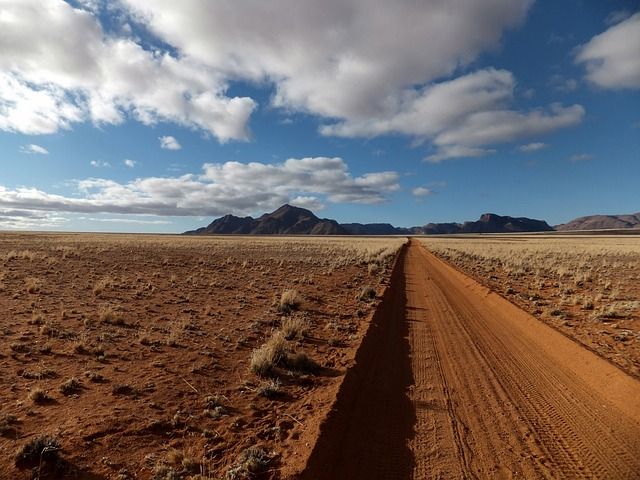Building Resilience to Drought: Learning from Experience in the Horn of Africa
Published on by Robert Brears, Founder of Our Future Water, Young Water Leaders, Mitidaption & Author (Springer Nature, Wiley) in Social
This publication was compiled by the Integrated Drought Management Programme in the Horn of Africa (IDMP HOA). The aim is to share lessons learned from innovative drought and water security demonstration projects conducted by communities and partners in Ethiopia, Kenya and Uganda.
The case studies also contribute to the global IDMP programme, a joint undertaking between the Global Water Partnership (GWP) and the World Meteorological Organization (WMO).
In preparing this document, the country facilitators reviewed 10 documented case studies of interventions in drought and water security with a view to consolidating general lessons and examples of good practice that could be replicated elsewhere in the region. In each case, the facilitators assessed the background and extent of the problem and its related effects, and described the interventions and coping strategies undertaken to address the issue.
They then reviewed the outcomes and drew out the lessons learned. It is hoped that these lessons will help stakeholders to deal with water scarcity in their own situations throughout the Horn of Africa.

Ethiopia
In Ethiopia, the cases are based on the watersheds of Abreha we-Atsebeha, Lake Hamaraya and Lake Ziway, all of which are susceptible to drought.
The people living in these areas are poor and face the daily challenge of food and water insecurity.
Their land is severely degraded as a result of soil erosion, deforestation, overgrazing and loss of biodiversity. However, with the support of donors and public–private partnerships, they have been able to adopt integrated and participatory watershed management tools, and this has restored hope to their communities. The tools include enacting natural resource management by-laws, controlling soil erosion, and adopting water harvesting and drip irrigation. In addition to improving water security, these interventions have increased food production and regenerated the biodiversity of the areas.
Kenya
In Kenya, the Makueni County community took action to address worsening water security problems, becoming mobilized through a social media platform.
Using simple water harvesting technologies, the people improved their food security, livelihoods and social structure, while preventing further environmental degradation. A water harvesting fund enabled local farmers to access finance in support of their activities.
Partnerships with banks and the private sector were formed in the area as a result of the community initiative. In Kitui County, the ‘Water harvesting for economic empowerment’ project enabled the construction of sand dams on the Mutweii River, helping to improve water security for agriculture and creating alternative livelihoods in the production of construction materials.
Uganda
The five case studies from Uganda focus on the semi-arid ‘cattle corridor’ where recurrent drought causes severe water and food insecurity. Community participation and effective partnerships among communities and governments (local and national) combined with financial and technical support aided the successful implementation of the projects and led to improved food and water security.
The key achievements included building water harvesting structures and forming a loan development scheme in Aswa-Agago sub-catchment; constructing infrastructure to augment water supply for domestic use and livestock production as well as initiating village savings and loan schemes for immediate income in Karamoja; introducing climate-smart agriculture to improve soil water retention and extend the growing season in Numutumba; restoring water quality in Lake Kako and promoting solar energy; and providing knowledge and skills for drought-coping mechanisms in Rakai, where communities constructed simple water catchments using locally available resources. All the communities involved have increased their resilience to drought, learning to be innovative in the face of climate change.
Key lessons learned
Initiatives driven by communities themselves create a sense of ownership and are more effective and sustainable. This often means changing mindsets and putting in place external support to ‘kickstart’ activities. At the same time, communities need to be armed with the knowledge they need to implement new ideas.
While ‘bottom up’ action is more sustainable, there is also a need for high-level political support to create an enabling environment for broad stakeholder participation (that includes women and the private sector).
Taking a landscape approach ensures all aspects of a problem are considered but requires effective implementation of appropriate regulatory frameworks governing natural resource use.
An integrated and participatory approach to water management will drive equitable and sustainable benefits and requires strong community governance structures.
Organizing farmers and other stakeholders into groups creates an entry point for information, training and action and gives people encouragement to adopt new ideas. Teamwork yields better results than working individually.
Active participation and coordination among different stakeholder groups promotes learning and strengthens decision-making, helping to integrate development programmes into local government structures and ensuring appropriate support is provided to communities. This also requires strong community institutions to ensure accountability.
Linking project interventions to specific livelihoods, activities, needs and interests enhances understanding of the importance of natural resources and the benefits of sustainable development. Simple, cost-effective and practical solutions to local challenges encourage rapid adoption.
Sustainability strategies need to be introduced at the identification stage of all project appraisals. For infrastructure projects, this includes agreeing a management strategy and funding for ongoing maintenance. Any undertaking by the community must be reinforced by local government offices.
Demonstration sites and appointing ‘champions’ or recruiting opinion leaders encourages adoption of new technologies. Schools can be highly effective in hosting demonstrations, raising awareness and promoting adoption.
Attached link
http://reliefweb.int/report/world/building-resilience-drought-learning-experience-horn-africaMedia
Taxonomy
- Agriculture
- Water Scarcity
- Water Security
- Governance
- Agriculture
- Water Access
- Environment